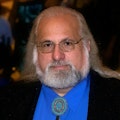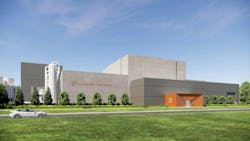Fusion Energy Moves Toward Reality: Strategic Investments by CFS, Google, and Eni Signal Commercial Readiness
Key Highlights
- Commonwealth Fusion Systems (CFS) is developing a compact tokamak reactor using high-temperature superconducting magnets to achieve net energy gain and accelerate fusion commercialization.
- Major industry players like Eni and Google have secured multi-billion-dollar PPAs with CFS and Helion, signaling strong commercial interest and early market validation for fusion energy.
- International efforts such as France's WEST tokamak and ITER are making progress in plasma stability and large-scale magnet technology, essential for future commercial fusion systems.
- Fusion faces significant technical challenges, including achieving stable operation, component durability, and navigating evolving regulatory and safety standards.
- The global fusion ecosystem is growing rapidly, with over 50 companies exploring diverse approaches, highlighting a competitive and collaborative environment aimed at delivering clean, limitless energy.
Spun out in 2018 from the Massachusetts Institute of Technology’s Plasma Science and Fusion Center, Commonwealth Fusion Systems (CFS) is pursuing one of the most advanced paths toward commercial fusion energy.
Unlike academic research ventures, CFS is structured as a commercial enterprise, focused on deploying a tokamak design enhanced by high-temperature superconducting (HTS) magnets. This approach enables stronger magnetic fields in a more compact device, potentially cutting both cost and development time on the path to operational fusion power.
At the end of 2024, the company announced plans to build the world’s first commercial fusion power plant in Chesterfield County, Virginia. The grid-scale 400-megawatt ARC reactor will be fully financed, owned, and operated by CFS. As of August 2025, the company had raised $863 million, most of which is earmarked for the project’s development.
In September 2025, the Chesterfield County Board of Supervisors granted final zoning approval for the ARC facility at the James River Industrial Park, clearing the way for construction. The project includes a non-financial collaboration with Dominion Energy Virginia, and county filings describe an operational target in the early 2030s with an expected 20-year lifespan.
Edward H. Baine, President of Dominion Energy Virginia, said of the development:
Commonwealth Fusion Systems is the clear industry leader in advancing the exciting energy potential of fusion. Our customers’ growing needs for reliable, carbon-free power benefits from as diverse a menu of power generation options as possible, and in that spirit, we are delighted to assist CFS in their efforts.
Strategic Partnerships with Eni and Google
Energy giant Eni, which first invested in CFS alongside MIT in 2018, deepened its commitment in 2023 through a multi-year strategic framework agreement aimed at accelerating commercialization. The pact opened the door to joint R&D and deployment projects, essentially serving as a bridge between laboratory milestones and bankable power generation.
In September 2025, Eni signed a power purchase agreement (PPA) with CFS valued at more than $1 billion, covering electricity from the company’s first ARC plant. This is not a research-support arrangement: it’s a commercial offtake contract between a strategic shareholder and a soon-to-be power producer.
The Eni agreement follows a 200 MW PPA signed by Google in June 2025, which fully subscribed the 400 MW capacity of the Chesterfield ARC reactor. Google, an early investor in CFS since 2021, also increased its equity stake at the time of the announcement, though the amount was undisclosed.
Michael Terrell, Head of Advanced Energy at Google, said:
By entering into this agreement with CFS, we hope to help prove out and scale a promising pathway toward commercial fusion power. We’re excited to make this longer-term bet on a technology with transformative potential to meet the world’s future energy demand, and support CFS in their efforts to reach the scientific and engineering milestones needed to get there.
How CFS’s Fusion Technology Works
Among the competing approaches to commercial fusion, CFS is betting on a tokamak design powered by high-temperature superconducting (HTS) magnets. This combination, the company believes, represents the most realistic near-term path to generating net-positive fusion power.
In simple terms, fusion occurs when light atomic nuclei, typically deuterium and tritium, combine at extremely high temperatures, overcoming their natural repulsion to form helium and release energy. The key milestone is achieving “net energy gain,” meaning the reactor produces more energy than it consumes to sustain the reaction.
CFS’s differentiator lies in its use of HTS magnets capable of producing magnetic fields exceeding 20 tesla - a major engineering milestone. Stronger magnetic fields allow for tighter plasma confinement, enabling smaller, more efficient, and more economical reactors. (A tesla, the standard unit of magnetic flux density, measures the strength of a magnetic field.)
By shrinking the scale and cost of fusion systems, CFS aims to accelerate deployment timelines and open a path to repeatable, factory-built fusion plants. Unlike conventional energy sources, fusion requires no carbon-based fuel and generates minimal long-lived waste, potentially transforming the global energy landscape.
Bob Mumgaard, CEO and Co-Founder of CFS, explained:
Our strategic deal with Google is the first of many as we move to demonstrate fusion energy from SPARC and then bring our first power plant online. We aim to demonstrate fusion’s ability to provide reliable, abundant, clean energy at the scale needed to unlock economic growth and improve modern living – and enable what will be the largest market transition in history.
Microsoft’s Bet on Helion Energy: A Different Path to Fusion Power
Microsoft is also moving into the fusion power arena, signing a power purchase agreement (PPA) with Helion Energy to buy electricity from the company’s first commercial fusion plant, targeted for delivery in 2028. Following an initial ramp-up period, Helion plans to deliver 50 megawatts (MW) of clean energy, making Microsoft its first customer.
Helion is constructing the facility in Malaga, Washington (Chelan County), close to Microsoft’s existing data centers. The company plans to connect to grid infrastructure located “just upstream” of Microsoft’s operations, leveraging proximity to its load centers. The site was selected for its available transmission capacity and existing industrial footprint, with groundbreaking taking place in August 2025.
While CFS is advancing a tokamak-based design enhanced by high-temperature superconducting magnets, Helion Energy is pursuing a pulsed fusion approach: a magneto-inertial system that compresses and expands plasma in rapid cycles, recovering energy through electromagnetic induction. This design differs from a conventional tokamak by relying on bursts of magnetic compression rather than continuous confinement.
Helion has built several prototypes, and its next-generation system, Orion, is expected to be the first to generate electricity. The initial phase of the Microsoft contract calls for 50 MW of output, with potential expansion as the technology scales.
The Challenge of Delivering on Schedule
Fusion remains among the most formidable engineering challenges ever undertaken. Achieving net energy gain, maintaining stable operation, ensuring component durability, and managing tritium fueling and maintenance cycles are all significant hurdles. Helion’s 2028 delivery target is considered highly ambitious even by industry standards.
Beyond the technical front, regulatory approval and safety certification add another layer of uncertainty. Fusion power generation is a new product category, meaning siting, licensing, and environmental review processes are still evolving.
That said, the U.S. Department of Energy’s Fusion Energy Strategy 2024 signals federal support for private fusion developers and could help streamline early projects. For now, the sector stands at an inflection point, where visionary investment meets the hard reality of physics and policy.
Global Fusion Momentum: France, Europe, and a New Competitive Context
As CFS, Google, Eni, and Helion press ahead, other fusion efforts worldwide are also making waves, reminding us this is a global race, not a U.S.-exclusive pursuit.
In France, the CEA’s WEST tokamak recently achieved a new benchmark by sustaining plasma for more than 22 minutes (1,337 seconds) at ~50 million °C, breaking previous records and demonstrating improved plasma control and stability. That milestone underscores the incremental but essential progress in continuous operation, one of the key prerequisites for any commercially viable fusion system.
Meanwhile, ITER, the international flagship built in southern France, continues its slow-but-steady assembly. Despite years of delays and cost overruns, ITER remains central to global fusion ambitions. It’s not expected to produce significant fusion output until the 2030s, but its role in validating large-scale superconducting magnet systems, remote maintenance, tritium breeding, plasma control, and heat management is essential to de-risking downstream commercial fusion designs.
Elsewhere in Europe, Proxima Fusion (Germany) is gaining attention. The company is developing a quasi-isodynamic stellarator design and has recently raised €130 million in its Series A, showing that alternative confinement geometries are earning investor support. While that path is more speculative, it adds needed diversity to the fusion technology portfolio.
Germany’s Wendelstein 7-X Raises the Bar
Germany added another major milestone to the fusion timeline this fall. At the Max Planck Institute for Plasma Physics, researchers operating the Wendelstein 7-X stellarator sustained a high-performance plasma for 43 seconds, setting a new world record for continuous fusion confinement. The run demonstrated stability and control at temperatures exceeding 30 million °C, proving that stellarators, once viewed mainly as scientific curiosities, can now compete head-to-head with tokamaks in performance.
Unlike tokamaks, which rely on strong external currents to confine plasma, stellarators use a twisted magnetic-field geometry that inherently stabilizes the reaction, allowing longer pulses with fewer disruptions. The record experiment achieved what physicists call the “triple-product” threshold: a balance of plasma density, temperature, and confinement time that defines progress toward net-energy conditions.
The achievement was the result of international collaboration, including contributions from Oak Ridge National Laboratory in the United States, CIEMAT in Spain, and HUN-REN in Hungary. Oak Ridge engineers designed a precision fuel-injection system that fired 90 frozen hydrogen pellets in perfect rhythm over the full 43-second sequence, while European partners synchronized heating and magnetic-field controls.
Researchers describe the result as a step change in plasma-stability management. By maintaining confinement longer than Japan’s JT-60U and the U.K.’s JET reactors, and with a smaller plasma volume, Wendelstein 7-X demonstrated high efficiency in energy use and control. It also validated the stellarator’s potential for steady-state operation, a critical advantage for future commercial systems that must run continuously, not in short pulses.
Together with France’s WEST and the expanding private ecosystem, the German record confirms that fusion innovation is now distributed and accelerating on multiple fronts, from compact high-field tokamaks and pulsed systems to long-duration stellarators capable of near-continuous output.
The Fusion Finish Line
Taken together, these developments reinforce a few key themes:
- Competition and collaboration coexist: national and private actors increasingly overlap, sharing lessons while staking intellectual property claims.
- Milestones matter: a 22-minute plasma run or a stable superconducting magnet is not the full solution, but validates critical subsystems that feed into commercial designs.
- Timelines are shifting, but cautiously: the more that fusion projects hit and communicate technical progress, the more pressure (and credibility) builds to deliver on advertised target dates.
- Risk remains high, but capital is flowing: with over 50 fusion companies now active globally and multiple paths in play, the ecosystem is richer (and more volatile) than ever.
In closing, the trajectory illuminated by CFS’s ARC ambitions, Google and Eni’s PPAs, and Helion’s pulsed approach sits within a broader accelerating wave of fusion activity. The question now is not simply if fusion will become commercially viable, but which architectures and which projects will cross the finish line first. Watch France’s WEST, ITER’s assembly steps, and Europe’s alternative designs, as they may teach the rest of us a lot, fast.
At Data Center Frontier, we talk the industry talk and walk the industry walk. In that spirit, DCF Staff members may occasionally use AI tools to assist with content. Elements of this article were created with help from OpenAI's GPT5.
Keep pace with the fast-moving world of data centers and cloud computing by connecting with Data Center Frontier on LinkedIn, following us on X/Twitter and Facebook, as well as on BlueSky, and signing up for our weekly newsletters using the form below.
About the Author

David Chernicoff
Matt Vincent
A B2B technology journalist and editor with more than two decades of experience, Matt Vincent is Editor in Chief of Data Center Frontier.



